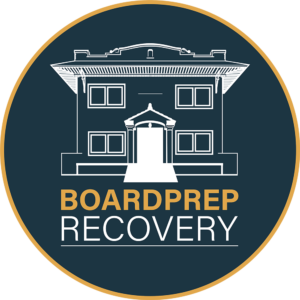Seeking Detox Answers? Here are some of the Ins & Outs of Inpatient Detox
For many people who have a substance use disorder, deciding to go into medically assisted drug detox can be an important—perhaps even vital—step in gaining freedom from active addiction. Given there are likely countless people with a drug dependency who are unfamiliar with drug detox, in general, this article will hopefully shed sufficient light for the reader to come away with greater understanding and, if appropriate, make a more informed decision for himself/herself.
Up front, it should be noted that, according to the National Institute on Drug Abuse (NIDA), “Medically assisted detoxification is only the first stage of addiction treatment. Although medically assisted detoxification can safely manage the acute physical symptoms of withdrawal and can, for some, pave the way for effective long-term addiction treatment, detoxification alone is rarely sufficient to help addicted individuals achieve long-term abstinence. Thus, patients should be encouraged to continue drug treatment following detoxification.”[1]
The fact is, when a person with a substance use disorder stops using drugs, a variety of withdrawal symptoms may arise, some of which are not only uncomfortable, but can be hazardous to one’s health and might even cause death. However, a) the medical doctors and staff members at addiction treatment centers have expertise at helping people get through their detox period as smoothly and swiftly as possible; and b) regardless of how unpleasant or challenging one’s experience of detoxing is, getting through detox and withdrawal from drugs can be both a life-saver and an essential first step in establishing long-term recovery from addiction.
[Note: Given the potential for serious medical issues or life-threatening withdrawal symptoms to emerge during detox, either of which may not arise with effective medical management, inpatient drug detox is more commonly recommended than outpatient detox. Therefore, we’ll focus exclusively here on inpatient detox.]
Those who seek medically assisted detox typically go to a residential drug treatment center, wherein the detox and withdrawal process are closely monitored by medical doctors and addiction treatment specialists. Within a supportive, highly structured environment, patients go through a detox protocol that has been developed with the particulars of their background and current status in mind.
The average detox stay ranges from 3 to 7 days, but the length of the detox and symptoms one experiences are dependent on a number of factors:
- The drug(s) the patient has been addicted to
- How long the person has been addicted
- The amount of the drug(s) used during their addiction
- Quantity of the drug dose taken prior to entering detox
- Presence of any co-occurring mental health issue(s)
- Use of any other drug(s), including alcohol, during addiction and immediately prior to entering detox
- Length of time the specific drug(s) stays in one’s system
While the specific physical and psychological symptoms that can be experienced during the detox and withdrawal process can vary with each person (especially given the above list of influential factors), a number of them are commonly reported, including:
- Elevated sense, particularly increased sensitivity to pain
- Agitation, irritability
- Mood swings, anxiety, depression
- Insomnia
- Restlessness and an inability to focus
- Flu-like symptoms: sweating, chills, muscle weakness, body aches, headaches, hot flashes
- Change in appetite: increased or decreased[2]
Since any, if not all, of these symptoms can become extremely uncomfortable and challenging to the person striving to detoxify from the drug(s) he/she has been addicted to, medically assisted detox in a residential treatment setting can significantly increase the likelihood of a successful detox experience, thereby laying the foundation for one’s moving forward into treatment, the next phase of recovery from addiction.
The goal of drug detox, according to NIDA[3], is to reach physical and psychological stability. Once this has been achieved, one can begin the treatment process with a recovery plan developed to meet his/her specific needs, which can then lead the person onward to establishing a new life in recovery, free from active addiction.
[1] https://www.drugabuse.gov/publications/principles-drug-addiction-treatment-research-based-guide-third-edition/principles-effective-treatment
[2] https://pinnacletreatment.com/blog/drug-detox-first-vital-step-recovery-addiction/
[3] https://www.drugabuse.gov/publications/principles-drug-addiction-treatment-research-based-guide-third-edition/principles-effective-treatment







